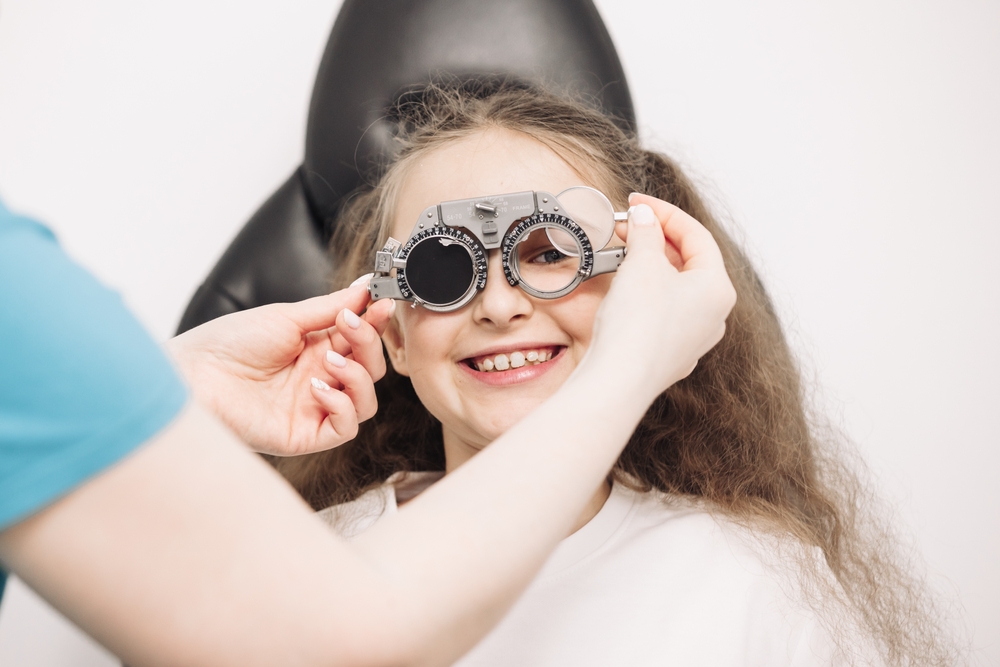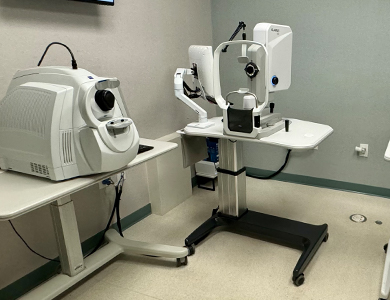
As parents, we all want the best for our children, especially when it comes to their health and education. One often-overlooked aspect of childhood wellness is vision health. Managing myopia, or nearsightedness, in children is critical for their overall development and well-being.
What Is Myopia?
Myopia, commonly known as nearsightedness, is a condition where distant objects appear blurry, but close objects are seen clearly. This occurs when the eye grows too long, causing light to focus in front of the retina instead of directly on it. Myopia is becoming increasingly common in children, likely due to increased screen time and less outdoor activity.
Signs and Symptoms of Myopia in Children
It’s not always easy for children to express that they’re having trouble with their vision. Here are some common signs and symptoms of myopia in kids to watch for:
• Squinting: Your child may squint to try to see distant objects more clearly.
• Sitting Too Close: A preference for sitting close to the TV or holding books close to the face.
• Difficulty in School: Complaints of not being able to see the board or struggling with classroom activities.
• Frequent Headaches: Eye strain caused by poor vision can lead to headaches.
• Excessive Blinking or Rubbing Eyes: This can indicate discomfort caused by struggling to focus.
If you notice any of these signs, scheduling an eye exam is essential.
The Role of Regular Pediatric Eye Exams
Routine eye exams are a cornerstone of pediatric health care. The American Optometric Association recommends that children have their first comprehensive eye exam at six months, another at age three, and annually thereafter.
These exams are critical for early detection of myopia and other vision issues. Detecting myopia early allows for timely interventions, which can help slow its progression and prevent complications later in life.
The Importance of Managing Myopia
Managing myopia goes beyond simply correcting a child’s vision with glasses or contact lenses. Without proper management, myopia can significantly impact your child’s learning, daily activities, and long-term eye health. Myopia can make it difficult for children to see the board, follow lessons, and engage in activities, leading to frustration and poor academic performance.
Additionally, high levels of myopia increase the risk of developing serious eye conditions such as retinal detachment, glaucoma, cataracts, and macular degeneration later in life. Managing myopia early can reduce these risks.
Effective Myopia Management Strategies
Advancements in eye care have made managing myopia more effective than ever. Common myopia management strategies include:
• Specialized Contact Lenses: Orthokeratology (Ortho-K) lenses are worn overnight to gently reshape the cornea and provide clear vision during the day.
• Atropine Eye Drops: These drops are used to slow the progression of myopia in children.
• Multifocal Contact Lenses: Designed to provide clear vision while addressing myopia progression.
• Encouraging Outdoor Time: Studies show that spending more time outdoors can help reduce the risk of developing myopia.
Partnering with ClearView Optometry for Comprehensive Myopia Management
We are dedicated to protecting your child’s vision and overall health. Our pediatric eye exams are designed to detect myopia early and create personalized management plans tailored to your child’s needs. By working together, we can help your child thrive academically and enjoy a future of healthy vision.
Contact ClearView Optometry to schedule a comprehensive pediatric eye exam and take the first step in managing your child’s myopia. Visit our office in Shafter, California, or call (661) 746-6989 to book an appointment today.







